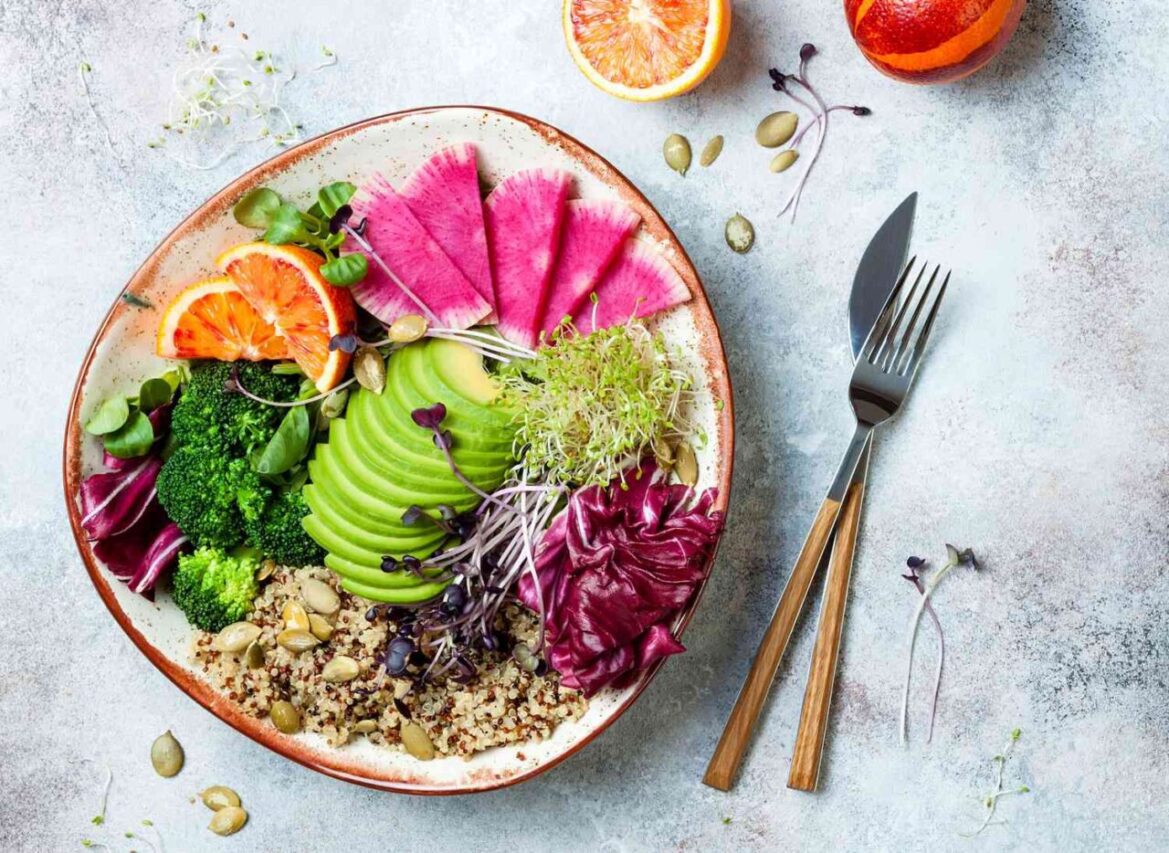5-Element Nutrition: Balancing Your Health Through Elemental Flavours and Mindful Eating
Introduction to 5-Element Nutrition
In traditional Chinese medicine (TCM), the Five Elements Theory is an essential part of understanding how the body functions and how it interacts with the environment. The Five Elements are wood, fire, earth, metal, and water. Each element represents a different aspect of nature and is associated with specific organs, emotions, and flavours.
The Five Elements Theory is used in TCM to understand how different foods can affect the body’s energy and balance. In 5-Element Nutrition, foods are classified according to their elemental properties, and their consumption is balanced to achieve optimal health and well-being.

The Five Elements and Their Corresponding Organs
Each of the five elements is associated with specific organs in the body, which can be used to help determine which foods are most beneficial for optimal health.
1. The Wood Element
The liver and gallbladder are associated with the wood element.
In western medicine the liver is responsible for filtering toxins from the blood, while the gallbladder aids in digestion.
In TCM the Liver stores the Blood when the body is at rest, it controls the menstrual cycle and ensures that the circulation of the Qi is smooth and even.
2. The Fire Element
The heart and small intestine are associated with the fire element.
In western medicine the heart pumps blood throughout the body, while the small intestine absorbs nutrients from food.
In TCM the Heart (Fire) houses the Spirit (consciousness, mind, spirit) and is concerned with the production and circulation of the Blood.
In TCM, the small intestine plays both a physical and a mental role. The mental role of the small intestine is to separate the clear thoughts from the turbid ones. Clear judgement depends on the ability of the small intestine to separate the pure from the impure. It further transforms the digestate by separating the “pure” part of the food and fluids from the “impure”.
3. The Earth Element
The spleen and stomach are associated with the earth element.
In western medicine the Spleen is an important immune system organ and does blood filtration for it.
In TCM the Spleen deals with the transformation of ingested nutrients into bodily substances and also deals with the production of Qi and Blood.
The Stomach breaks down food and controls the transportation of the food essence to the whole body including limbs.
4. The Metal Element
The lungs and large intestine are associated with the metal element.
In western medicine the lungs are responsible for breathing and oxygenation, while the large intestine eliminates waste.
In TCM the Lungs control the final production and the circulation of the Qi and body Fluids that activate and nourish the body. One aspect of this is that it sends Qi and Fluids to the Kidney.
The Large Intestine is to let go of the “rotten food”, but also of long standing emotions!
5. The Water Element
The kidneys and bladder are associated with the water element.
In western medicine the kidneys filter waste from the blood, while the bladder stores and eliminates urine.
In TCM the Kidney (Water) stores and produces the Essence, which is concerned with reproduction, growth, development and maturation.
In Western medicine, the bladder is a reservoir for holding urine before it is evacuated. To do this, according to TCM, the Bladder uses qi (energy) and heat from its paired yin organ, the Kidney.
How 5-Element Nutrition Works
In 5-Element Nutrition, foods are classified according to their elemental properties, and their consumption is balanced to achieve optimal health and well-being. Each element is associated with specific flavors, which are believed to have different effects on the body.
Wood: Sour foods such as lemons, limes, and vinegar are associated with the wood element. They are believed to stimulate the liver and gallbladder.
Fire: Bitter foods such as dark leafy greens, coffee, and dark chocolate are associated with the fire element. They are believed to stimulate the heart and small intestine.
Earth: Sweet foods such as fruits, vegetables, and grains are associated with the earth element. They are believed to stimulate the spleen and stomach.
Metal: Pungent foods such as onions, garlic, and ginger are associated with the metal element. They are believed to stimulate the lungs and large intestine.
Water: Salty foods such as seaweed, miso, and soy sauce are associated with the water element. They are believed to stimulate the kidneys and bladder.
By balancing the consumption of different elemental flavours, 5-Element Nutrition can help to maintain the body’s energy and balance, improve digestion, boost immunity, and reduce the risk of chronic diseases.

10 Ways to Integrate 5-Element Nutrition into Your Lifestyle
1. Start your day with a balanced breakfast
A balanced breakfast that includes all five elemental flavors can help to jumpstart your metabolism and give you energy throughout the day. For example, you could try making a breakfast bowl that includes sweet grains, such as oatmeal or quinoa, topped with sour fruit, such as berries or kiwi, and a sprinkle of salty nuts, such as almonds or cashews.
2. Incorporate bitter greens into your meals
Bitter greens, such as kale, arugula, and dandelion greens, are a great way to incorporate the fire element into your diet. They can be added to salads, smoothies, or sautéed as a side dish.
3. Cook with pungent spices
Pungent spices, such as ginger, garlic, and cumin, are a great way to incorporate the metal element into your diet. They can be used to add flavor and depth to soups, stews, and curries, or sprinkled on roasted vegetables for a healthy and delicious side dish.
4. Snack on sour fruits
Sour fruits, such as citrus fruits, berries, and pomegranates, are a great way to incorporate the wood element into your diet. They can be eaten as a snack, added to smoothies, or used to flavor water for a refreshing and healthy drink.
5. Try fermented foods
Fermented foods, such as sauerkraut, kimchi, and kefir, are a great way to incorporate the sour and salty flavors of the wood and water elements into your diet. They are also beneficial for gut health, as they contain probiotics that help to improve digestion and boost immunity.
6. Experiment with different grains
Different grains have different elemental properties, and incorporating a variety of grains into your diet can help to balance your energy and improve digestion. For example, quinoa and millet are sweet grains, while buckwheat and rye are considered to have pungent properties.
7. Drink herbal teas
Herbal teas, such as chamomile, peppermint, and ginger tea, are a great way to incorporate the pungent and sweet flavors of the metal and earth elements into your diet. They are also a healthy alternative to sugary drinks, and can help to improve digestion and reduce stress.
8. Use healthy oils in your cooking
Healthy oils, such as olive oil, coconut oil, and avocado oil, are a great way to incorporate the sweet and sour flavors of the earth and wood elements into your diet. They are also beneficial for heart health and can help to reduce inflammation in the body.
9. Add seaweed to your meals
Seaweed is a great way to incorporate the salty flavor of the water element into your diet. It can be used as a topping for salads, soups, and rice bowls, or eaten as a snack in the form of nori sheets.
10. Practice mindful eating
Incorporating 5-Element Nutrition into your lifestyle is not just about what you eat, but also how you eat. Mindful eating involves paying attention to your body’s hunger and fullness cues, savoring the flavors and textures of your food, and avoiding distractions such as TV or phones while eating. This can help to improve digestion, reduce stress, and promote overall wellbeing.
Conclusion
Incorporating 5-Element Nutrition into your lifestyle can help to balance your energy, improve digestion, boost immunity, and reduce the risk of chronic diseases. By incorporating a variety of elemental flavors into your diet and practicing mindful eating, you can achieve optimal health and wellbeing. Start by incorporating one or two of the tips above into your daily routine, and gradually build up to a more balanced and healthy diet.






